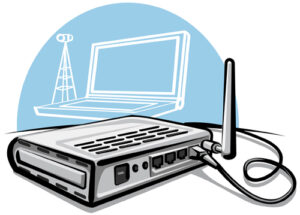 Information Technology decision makers (ITDMs) believe wireless networks to be the most vulnerable element of the IT infrastructure, according to a survey from Fortinet. Nearly half (49%) of respondents ranked wireless networks as most exposed from a security standpoint, in contrast to just 29% for the core network.
Information Technology decision makers (ITDMs) believe wireless networks to be the most vulnerable element of the IT infrastructure, according to a survey from Fortinet. Nearly half (49%) of respondents ranked wireless networks as most exposed from a security standpoint, in contrast to just 29% for the core network.
The Fortinet survey also reveals that insufficient wireless security is a concern for almost all (92%) of the CIOs polled; hardly surprising given that more than one-third of the enterprise wireless networks put in place for internal employees, do not have the basic security function of authentication in place.
The findings come from an independent survey of over 1,490 IT decision makers at 250+ employee organisations around the world. All respondents were sourced from independent market research company Lightspeed GMI’s online panel.
According to the survey, wireless networks are ranked as the most vulnerable IT infrastructure, with the highest proportion of ITDMs (49%) placing it in their top two. Respondents positioned wireless as significantly more vulnerable than corenetworking infrastructure, with just 29% of ITDMs ranking this highly. Databases (25%), applications (17%) and storage (11%) infrastructures were considered amongst the least susceptible from a security standpoint.
In addition, 37% of global ITDMs polled do not have the most basic wireless security measure of authentication in place. A significant 29% and 39% of enterprises respectively, overlook firewall and anti-virus security functions when it comes to wireless strategies.
Other security measures deemed critical to core infrastructure protection, such as IPS (deployed by 41%), application control (37%) and URL filtering (29%), play a part in even fewer wireless deployments.
When considering the future direction of their wireless security strategies, the majority of respondents said they would maintain focus on the most common security features – firewall and authentication, while demand for more security is emerging with 23% prioritising complementary technologies – IPS, anti-virus, application control and URL filtering – to guard against the full extent of the threat landscape.
Of the ITDMs surveyed, 83% are concerned their existing wireless security is not sufficient, with CIOs reporting the highest level of concern at 92%. Despite deploying the highest level of security of all the regions surveyed, ITDMs across APAC are the most concerned about their wireless security with 44% stating they are very concerned, in contrast to 30% in the Americas, and 20% in EMEA.
Globally, ITDMs reported varying confidence levels in wireless security; China tops the board with 71% ‘very concerned’, compared to just 13% in Japan.
When asked to cite the risks of operating an unsecured wireless network, 48% of ITDMs considered loss of sensitive corporate and/or customer data as the biggest risk to their organisation. This was highest at 56% in APAC, in contrast to the Americas at 45% and EMEA 42%.
For more information see the November 2015 edition of PSI magazine.

